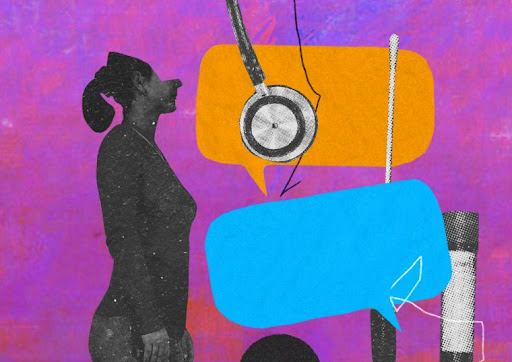Myths related to STIs
Sexually transmitted infections (STIs) are prevalent and can impact individuals of diverse ages, genders, ethnicities, and sexual preferences. STIs don’t discriminate. Anyone sexually active can get an STI, regardless of their socioeconomic status, education level, or lifestyle. Regrettably, numerous false beliefs and misunderstandings exist about STIs, fostering stigma, embarrassment, and inaccurate information. Here are some of the prevalent misconceptions regarding STIs. We also look at some misconceptions specifically related to HIV and AIDS.

Myths/Facts
1. Myth: If your partner has an STI, you’ll see it.
Fact: Many STIs don’t cause symptoms, so you can’t always tell if someone has an infection just by looking at them. The only way to know for sure is to get tested.
2. Myth: All STIs can be cured.
Fact: While some STIs like Gonorrhea and Chlamydia are treatable and curable with antibiotics, others like herpes and HIV are not curable but can only be managed with medication.
3. Myth: Only teenagers get STIs.
Fact: Anyone who is sexually active can get an STI regardless of their age.
- Myth: You can get an STI from a toilet seat.
Fact: STIs are spread through sexual contact, not by sitting on a toilet seat. The viruses that cause STIs cannot survive for long outside the human body, so they cannot be transmitted through casual contact.
- Myth: I can’t get an STI if I’ve only had one partner.
Fact: Having sex with only one partner does not eliminate the risk of getting an STI. It’s essential to consider your partner’s sexual history and get tested regularly.
- Myth: Using plastic wrap instead of a condom will prevent STIs.
Fact: Plastic wrap is not an effective barrier against STIs. Condoms are the only form of protection that can reduce the risk of STI transmission. (Ref: www.verywellhealth.com)
- Myth: If someone is taking birth control pills, they can’t get an STI:
Fact: Birth control pills do not protect against STIs. The only way to reduce the risk of STI transmission is to use condoms or practice abstinence. (Ref: www.Sbm.org)
- Myth: Condoms Provide 100% Protection Against STIs
Fact: While condoms are an effective method for reducing the risk of STIs, they are not foolproof. Some STIs, like herpes and HPV, can be transmitted through skin-to-skin.
contact, which means they can be contracted even when using a condom. Condoms are still an essential tool in STI prevention, but they do not guarantee total protection.
9.Myth: STIs Can Be Cured by Home Remedies
Fact: This myth can be dangerous. Some people believe that STIs can be treated with home remedies or over-the-counter medications. In reality, many STIs require prescription medications prescribed by a healthcare professional. Attempting to treat an STI with unproven methods can lead to complications and further transmission.
- Myth: You Can’t Get the Same STI Twice
Fact: Having an STI once does not make you immune to it in the future. In some cases, such as chlamydia or Gonorrhea, you can get re-infected if you have unprotected sex with an infected partner or multiple partners. It’s essential to practice safe sex and get tested regularly, even if you’ve had an STI before.
- Myth: You Can’t Get STIs from Oral or Anal Sex
Fact: STIs can be transmitted through various sexual activities, including oral and anal sex. Some people mistakenly believe that these activities are risk-free when it comes to STIs, but this is not accurate. Proper protection, such as dental dams and condoms, should be used to reduce the risk of transmission during these activities.

Debunking Myths on AIDS/HIV
- Myth: I can get HIV by being around HIV-positive people.
Fact: HIV does not spread through touch, tears, sweat, saliva, or pee. You can’t catch it by breathing the same air or touching a toilet seat or door handle.
- Myth: Only queer people can get HIV.
Fact: Anyone, regardless of age, gender, ethnicity, or sexual orientation can become infected with HIV
- Myth: It’s OK to have unprotected sex if both partners have HIV.
Fact: Unprotected sex between two people who have each been diagnosed with HIV is still risky. HIV can be spread through unprotected sex. This can mean amplified symptoms in people already affected by HIV.
- Myth: HIV always leads to AIDS.
Fact: HIV is the infection that causes AIDS, but not all HIV-positive individuals will develop AIDS
- Myth: If someone has HIV, they will look sick.
Fact: Many people with HIV look and feel healthy for years without any symptoms. The only way to know for sure if someone has HIV is to get tested
- Myth: HIV medications can cure HIV.
Fact: While HIV medications can help people with the virus live long, healthy lives, there is currently no cure for HIV
- Myth: HIV is a death sentence.
Fact: With proper medical care and treatment, people with HIV can live long, healthy lives
- Myth: HIV is a punishment for immoral behaviour.
Fact: HIV is a virus that can affect anyone, regardless of their behaviour or lifestyle. Stigma and discrimination against people with HIV can be harmful and perpetuate misinformation.
Conclusion
Myths and misconceptions about STIs can have serious consequences, from promoting stigma to hindering prevention efforts. It’s crucial to dispel these myths with accurate information and encourage regular testing, safe sexual practices, and open communication about sexual health. Remember that anyone can contract an STI, and seeking timely medical attention is the best way to manage and prevent these infections. Education and awareness are key to reducing the prevalence of STIs and ensuring better sexual health for all.
Author

